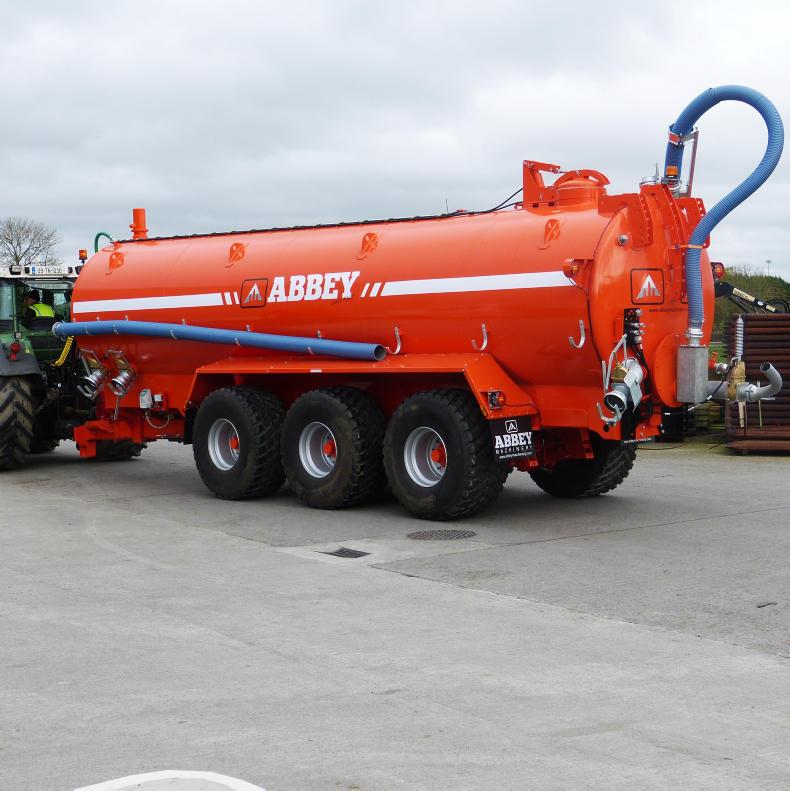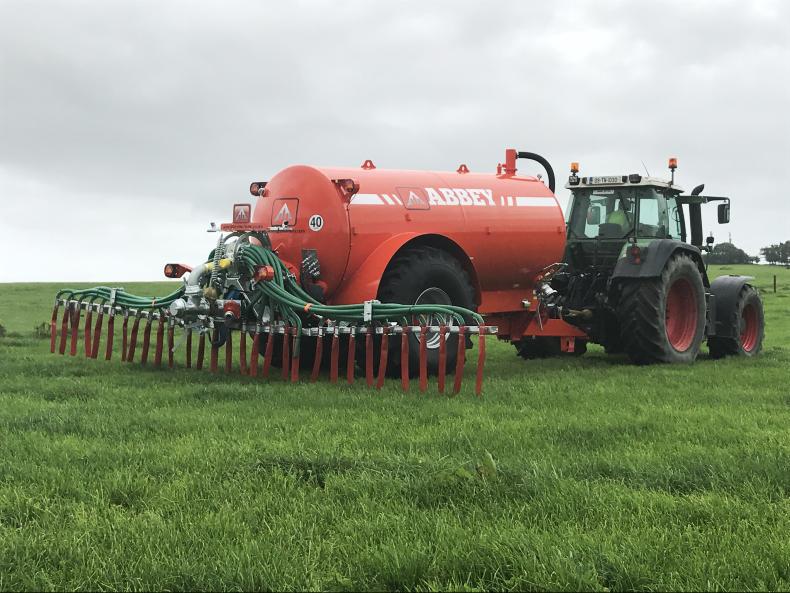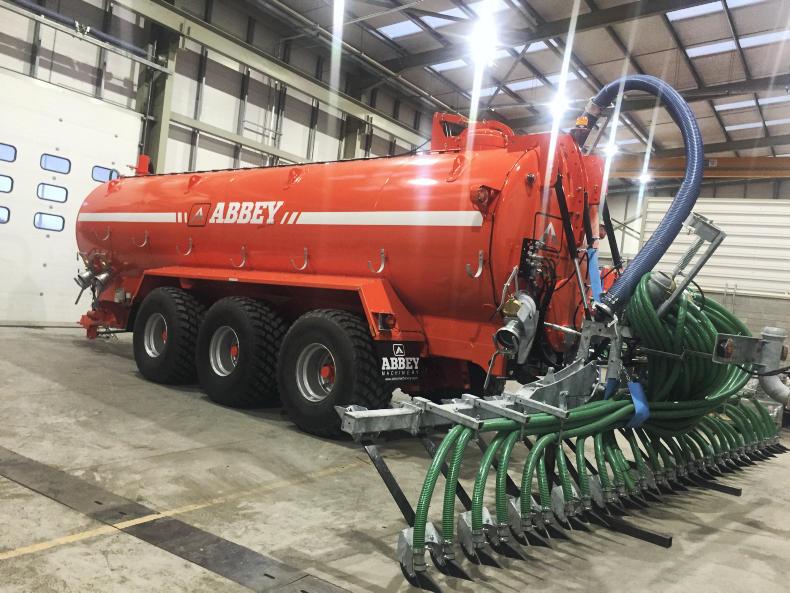The global rise in farm size was one of the reasons Abbey Machinery developed a 6,000 gallon (22,712l) tri-axle slurry tanker. This tanker has some impressive features that Abbey claims make it very manoeuvrable and easier to pull despite its imposing size.
It uses a tri-axle bogey system with front and rear axle-steering. This means it follows the tractor better and causes minimal ground damage. The tanker itself is supported internally for two reasons, one to stop slurry sloshing around during transit and secondly for structural strength. Lastly, there is a parabolic weight-sensing drawbar that makes towing the tanker a lot easier. So far, Abbey has built two of these tankers for the international market complete with Siemens flow measurement for accurate application rate control.
Other updates from Abbey are for its more popular smaller tankers that use non-splash-plate methods of application.
These are their soil-engaging Vertical trailing shoe (6m and 7m options) and Tri-App (7.5m). These are methods that prevent slurry hitting the canopy of the crop, that follow the contours of ground and the hydraulic masts system vary the height over the crop.
Included in this group of products is the 7.5m door-mounted band spreader. This can be retro-fitted to the rear door of a slurry tanker so an existing tanker can be used.
There are additional support brackets for extra stability. It is mounted close to the slurry tanker’s rear door for optimum weight transfer to the tractor hitch.
It comes complete with a Vogelsang ExaCut Distributor to make sure the slurry doesn’t block each of the 28mm x 40mm pipes. The booms fold vertically for road transportation.
The applicator places the slurry in lines on the soil with the benefit of trapping the ammonia nitrogen below the crop canopy to harness more nitrogen, reduced smell and encourage better crop performance from the time of application.
Abbey estimates that animals typically only utilise 15-20% of what they eat and the rest comes out as waste. This waste needs to be stored and in turn applied to the land – hence the rise in demand for their products with the rise in cow numbers following the abolishment of quotas.






 This is a subscriber-only article
This is a subscriber-only article












SHARING OPTIONS: